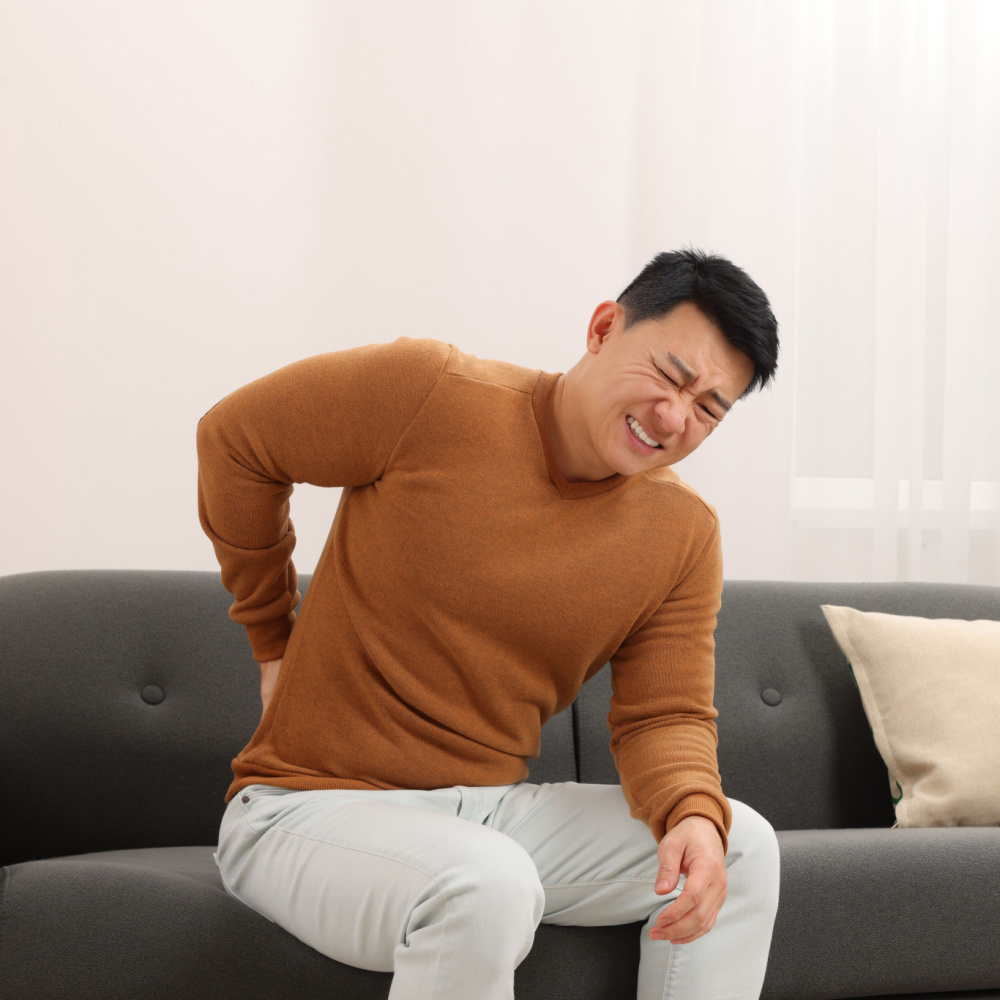
Pain is the body’s signal of injury or discomfort and can be categorized as acute (quick and temporary) or chronic (lasting three months or more) [1]. Every person experiences pain uniquely, whether it’s a sharp stab, constant ache, or throbbing discomfort. Chronic body ache is usually different from normal ache, wherein the body continues to send pain signals to the brain, even after an injury heals. This can, therefore, limit a person’s daily activities such as working, having a social life, and taking care of oneself and others.
While the modalities of managing pain depend on the type of pain, let’s look into some of the most common ones.
Take control and experience comfort with products designed to target and soothe pain.
Find Relief Here
What Does Chronic Body Aches Feel Like?
People with chronic pain describe the pain in many different ways, such as:
-Burning
-Shooting
-Stiffness
-Squeezing
Chronic pain can often lead to other symptoms and conditions such as depression, anxiety, and insomnia (trouble sleeping), which can make the pain even worse.
What Causes Chronic Body Aches?
There are many causes of chronic pain. It may have originated from an illness or injury, from which a person may have recovered long back, but the pain remained [2]. Or there may be some ongoing cause of pain such as:
-Tissue damage
-Inflammation
-Nerve disorders
-Underlying health conditions
5 Ways to Relieve Chronic Body Aches
1. Hot and Cold Therapy
Heat therapy reduces pain by bringing more blood flow to the area through vasodilation (widening of blood vessels). This relaxes the muscles and reduces pain, spasms, and stiffness.
Cold therapy does the opposite of heat, it constricts small blood vessels and capillaries, which changes the course of blood flow away from the injured area. That reduces inflammation and swelling, and hence, relaxes the muscles.
Tip:
-Use hot therapy for muscle soreness, stiff joints, chronic pain,, and menstrual cramps.
-Use cold therapy in the case of acute injuries, swelling, inflammation, muscle strains, and post-exercise recovery.
Choose the therapy that suits you the best. Check out our hot and cold pack range to ease your discomfort. Buy Now
2. Physical Activity and Exercise
Engaging in regular exercise releases endorphins, the body’s natural painkillers, lessening the perception of pain. Not only does exercise alleviate pain, but it also has effects on mental health, such as mood elevation and reduction of stress and depression [3].
While light physical activity can alleviate mild pain, it’s advisable to avoid vigorous exercise during significant pain. Also, incorporating proper stretching techniques can help ease muscle tension and enhance flexibility.
Elevate your workout with quality with our widest range of exercise equipment for a pain-free and effective fitness routine. Shop Here
3. Take Help Of Supportive Devices
Assistive devices are convenient aids that serve as an extension of support. A few examples of these devices include pillows, braces, walkers, crutches, wheelchairs, or ergonomic aids to enhance support and comfort, particularly if a person experiences chronic body aches. The primary purpose of these tools is to reduce physical strain during movement and enhance the safety of these individuals as they engage in their routine activities.
These devices also help to maintain good posture and can reduce stress on muscles, joints, and ligaments, thus relieving pain.
Check out our widest range of neck, back, and shoulder supports to eliminate persistent pain due to bad posture. Shop now
4. Use Ergonomics Furniture
Ergonomic furniture has emerged as a reliable solution for individuals looking for ideas on how to deal with chronic pain. These types of furniture are designed to reduce strain on the body, enhance comfort, and improve posture, which enhances the overall well-being of the individual dealing with constant discomfort. It is a proactive way to manage chronic pain as it minimizes pressure on joints and muscles, reducing the risk of worsening the pain.
Tip: Try to look for adjustable beds and office chairs that help alleviate lower back pain and other types of chronic discomfort.
5. Try Pain Relievers
Pain relievers are medicines that reduce or relieve headaches, sore muscles, or other aches and pains. Over-the-counter creams, gels, or patches can provide some localized pain relief. However, it is best to take the advice of your doctor to understand what would work best for you.
Unable to get your medication on time? Order from India’s trusted online pharmacy for timely doorstep delivery. Explore Here
Understanding the cause and learning effective ways to cope with chronic pain can improve overall well-being. These five practical techniques can help in getting relief from chronic body aches. However, if you are still facing the issue consult a doctor immediately if the pain is:
-Taking more than expected time to heal
-Intense, or unexplained
-Accompanied by symptoms like fever, numbness, or weakness
-Chronic and difficult to manage.
It is well said, “Don’t Let The Pain Hollow You From Inside’. It’s crucial to acknowledge that different people may perceive and describe pain differently, and a medical evaluation may be necessary to diagnose and treat the specific cause of pain effectively.
(The article is written by Simran Suri, Assistant Team Lead, and reviewed by Monalisa Deka, Senior Health Content Editor)
References:
1.Dydyk AM, Conermann T. Chronic Pain.National Library Of Medicine. [Updated 2023]. Available From: https://www.ncbi.nlm.nih.gov/books/NBK553030/
2. Pain. National Institute of Neurological Disorders and Stroke.Available From: https://www.ninds.nih.gov/health-information/disorders/pain
3.Lima LV, Abner TSS, Sluka KA. Does exercise increase or decrease pain? National Library Of Medicine. [Updated 2017]. https://www.ncbi.nlm.nih.gov/pmc/articles/PMC5491894/